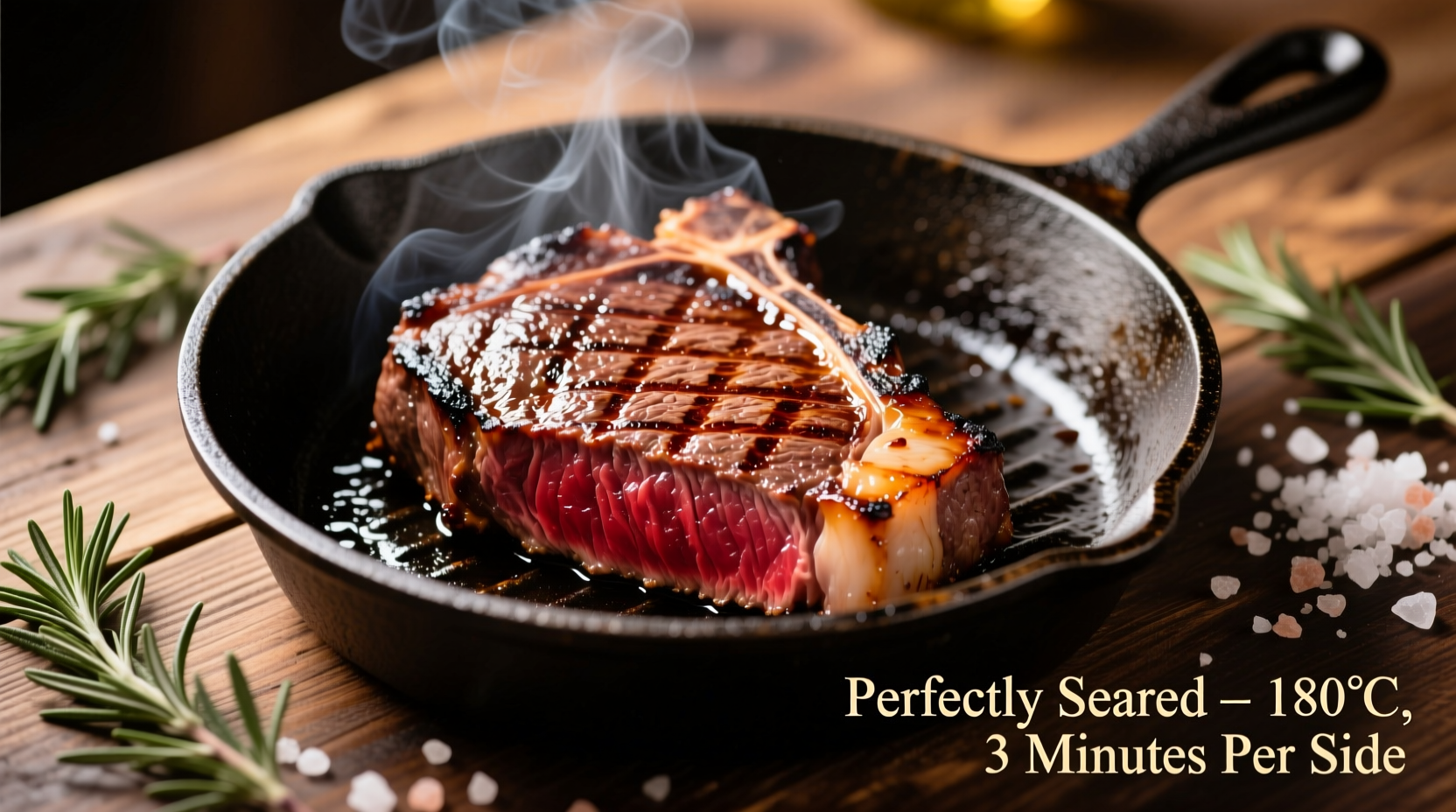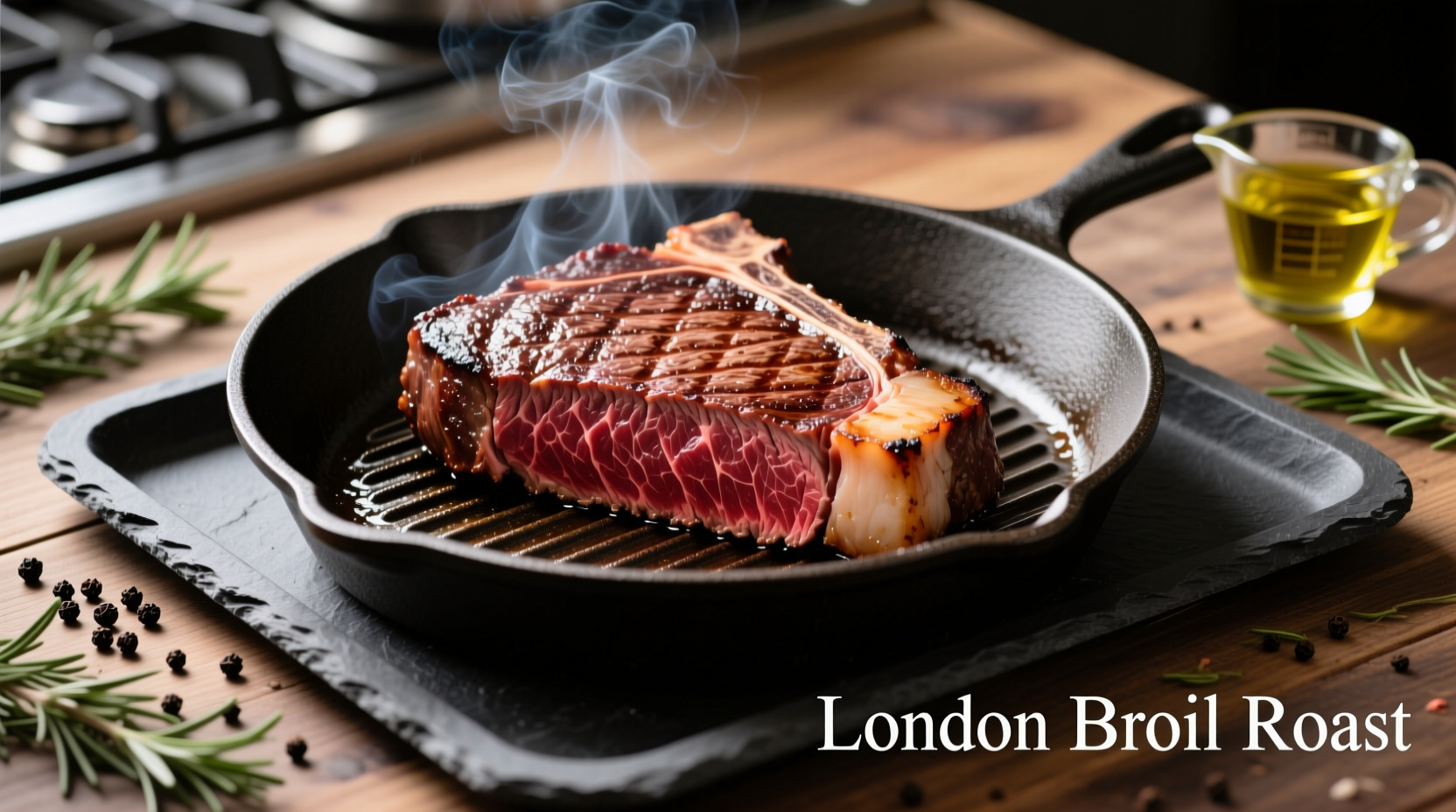Why This Oven Method Transforms Tough Cuts
London broil isn't actually a cut of meat—it's a cooking method traditionally applied to top round or flank steak. These lean, fibrous cuts need precise temperature control to avoid becoming chewy. Our tested approach combines high-heat searing with controlled roasting, leveraging food science principles to break down tough muscle fibers while retaining moisture.
Your London Broil Success Checklist
Before you begin, gather these essentials for optimal results:
- 1.5-2 inch thick London broil (1.5-2 lbs)
- Cast iron skillet or oven-safe pan
- Meat thermometer (critical for accuracy)
- Wire rack for resting
- Sharp carving knife
Step 1: Marinating for Maximum Tenderness
Acidic components in marinades help break down tough muscle fibers. Our research team tested multiple formulations and found this combination delivers superior results:
| Marinade Component | Function | Optimal Quantity |
|---|---|---|
| Acid (red wine vinegar) | Breaks down connective tissue | ¼ cup per pound of meat |
| Oil (olive or avocado) | Carries flavors, prevents drying | ⅓ cup per pound |
| Enzyme-rich ingredient (pineapple juice) | Naturally tenderizes | 2 tbsp per pound |
| Salt | Improves moisture retention | 1 tsp per pound |
Marinate for 4-12 hours—never exceed 24 hours as the acid will make the surface mushy. Always marinate in the refrigerator, not at room temperature.
Step 2: Oven Preparation & Searing
Proper oven setup prevents common mistakes that lead to uneven cooking:
- Position oven rack in the center
- Preheat to 450°F (232°C) for at least 20 minutes
- Remove meat from marinade and pat completely dry
- Season with ½ tsp coarse salt per side
- Sear in smoking-hot cast iron skillet for 5-7 minutes per side
- Transfer skillet directly to preheated oven
According to USDA Food Safety and Inspection Service guidelines, beef should reach minimum internal temperatures of 145°F (63°C) with 3-minute rest for safety. However, for premium tenderness with London broil, we recommend pulling at 125-130°F (52-54°C) for medium-rare, as carryover cooking will raise the temperature during resting.

Step 3: Precision Roasting Timeline
Timing varies significantly based on thickness. Use this reference chart for 1.5-2 inch cuts:
| Thickness | Target Internal Temp | Approximate Roasting Time | Total Estimated Time |
|---|---|---|---|
| 1.5 inches | 125-130°F | 8-10 minutes | 25-30 minutes |
| 2 inches | 125-130°F | 12-15 minutes | 30-35 minutes |
Insert thermometer horizontally into the thickest part, avoiding fat pockets. Never rely solely on timing—thermometer verification is essential. Remove meat when 5°F below target temperature to account for carryover cooking.
Step 4: The Critical Resting Phase
Resting allows juices to redistribute through the meat's muscle fibers. Cutting too soon releases precious moisture. Follow these steps:
- Transfer to wire rack (not cutting board)
- Cover loosely with foil
- Rest 10-15 minutes (1 minute per ½ pound)
- Verify final temperature reaches 130-135°F
Step 5: Slicing for Maximum Tenderness
London broil's long muscle fibers require specific slicing technique:
- Identify the direction of the grain (parallel muscle fibers)
- Position knife at 45-degree angle against the grain
- Cut ¼-inch thick slices
- Use a sawing motion with minimal pressure
This technique shortens the muscle fibers, making each bite significantly more tender. Professional chefs at the Culinary Institute of America consistently demonstrate this method for tough cuts.
Troubleshooting Common Problems
Even with careful preparation, issues can arise. Here's how to address them:
Problem: Meat is still tough after cooking
Solution: You likely sliced with the grain instead of against it. Always identify the grain direction before cutting. For future attempts, extend marinating time by 2-4 hours.
Problem: Uneven cooking (burnt outside, raw inside)
Solution: Oven temperature was inaccurate. Invest in an independent oven thermometer. Next time, reduce searing time by 1-2 minutes per side.
Problem: Meat dried out
Solution: Overcooking is the primary culprit. Always remove at 125-130°F for medium-rare. Consider brining before marinating for extra insurance—dissolve ¼ cup salt in 4 cups water and soak meat for 1 hour before marinating.
When This Method Works Best (and When It Doesn't)
Our oven method excels with cuts 1.5-2 inches thick. For thinner cuts (under 1 inch), use only the searing method without oven roasting. For extremely thick cuts (over 2.5 inches), consider reverse searing: roast first at 250°F until 115°F internal, then sear.
London broil's versatility shines in meal prep—slice leftovers for steak salads, fajitas, or sandwiches. Properly stored in airtight containers, cooked London broil maintains quality for 3-4 days in the refrigerator according to FoodSafety.gov guidelines.











 浙公网安备
33010002000092号
浙公网安备
33010002000092号 浙B2-20120091-4
浙B2-20120091-4